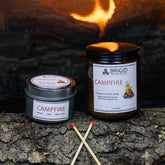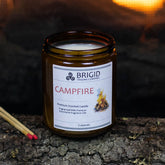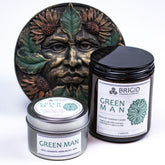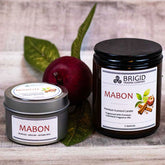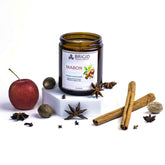What is Litha? Exploring the Ancient Celebration of the Summer Solstice
What is Litha? Exploring the Ancient Celebration of the Summer Solstice
Understanding Litha’s Ancient Origins Around the World and Ideas on how to celebrate the Summer Solstice
The days are beginning to grow long and the nights much shorter, which means that Litha is right around the corner! Also known as Midsummer, this ancient solar celebration falls on the Summer Solstice, the longest day of the year for the Northern Hemisphere. On this day, with the night at its shortest, the abundance of nature is on full display. Read on to learn how to celebrate Litha and learn more about this ancient solar tradition.
For the year 2025, Litha falls on the cusp of June 20th and 21st. Quite specifically, at 2:41UTC on June 21st, or 7:41PM PST on June 20th, the Solstice Moment will occur: the sun will be at its northernmost point, illuminating much of the Northern Hemisphere for late into the night. Once day falls to night, however, the days begin to grow shorter and the nights once again begin to lengthen.
Litha is an ancient Sabbath, one of the high holidays of the ancient solar calendar, whose themes of strength, success, wealth, cleansing and renewal are still just as relevant today. Brigid's signature Litha scent is made with lemon and orange to symbolize cleansing and renewal, as well as myrtle for renewal, wellness and prosperity, and ylang ylang to symbolize love, abundance, and creativity.
What is Litha?
The Summer Solstice is the longest day of the year, when the Sun reaches its zenith overhead. While Litha falls near the end of June in he Northern Hemisphere, for the Southern Hemisphere, where the seasons are reversed, Litha won't be until December!
The Summer Solstice has been celebrated for millennia. On this date, the year teeters on the edge: while it is the longest day and the shortest night, bringing with them months of light to come, Litha also means that the year is beginning to draw to a close. From that point on, until the Winter Solstice, the days will only grow shorter.
The name “Litha” comes from Anglo-Saxon sources, and is not Irish. However, pre-Christian Ireland crafted monuments and rituals long before the name Litha was introduced. In modern pagan traditions, the name Alban Hefin, or "Light of Summer" in Irish is sometimes used, as is Grianstad an tSamhraidh, which literally translates to "Summer Solstice." Despite this, Litha remains the most common alternative name for the Summer Solstice.
-
The name “Litha” is linked to the writings of Bede, who called the months leading up to the solstice as “Ærra Liða” (“before Litha”) and “Æfterra Liða” (“after Litha”).
-
Litha is one of the eight Sabbats on the Wheel of the Year, recognized by historians, modern pagans and Wiccans, as well as Christians and many other philosophies and theologies.
-
We here at Brigid see Litha as a way to celebrate the changing seasons, since our connection to the natural world is more difficult to maintain than ever in today’s culture. Like the rest of the dates on the Wheel, this interpretation of the passage of time is open to all.
Irish History and Mythology Surrounding Litha
Pre-Christian Irish culture marked the Summer Solstice’s significance in many ways, including building monuments and much more. Ireland in summer, lush and alive with plants and wildlife, remains the perfect backdrop for such celebrations, and it showed: few dates had more importance attached to them than the Solstice. More than an astronomical event, the Solstice in Ireland is a deeply rooted cultural moment that connects the present to the past.
Many ancient Irish monuments were built to align with the sun, most built well before the arrival of the Celts:
-
On the summer solstice, Newgrange, an ancient monument in County Meath dated to 3100 BC, has its back chamber illuminated at sunset for a period of about a month both before and after the solstice (note: Newgrange is best known for its winter solstice effect, wherein the entrance is illuminated).
-
The Hill of Tara is a popular place for celebrating the summer solstice in Ireland. Featuring the Stone of Destiny (aka the “Lia Fáil”), said to roar upon the touch of a rightful High King of Ireland, many Irish myths and legends focus around this historically important monument. Every Litha, The Hill of Tara attracts hundreds of people who gather to witness the sunrise (around 4am) and reflect on the longest day of the year.

-
Carrowkeel Cairn G in County Sligo features a roofbox above its entrance that allows the back of the chamber to become illuminated by the sun at sunset for many days before and after the summer solstice.
As is still practiced in some parts of the world, it was common to find Litha bonfires blazing on hilltops long into the night. Deeply connected to the Sun, these customs were later merged with Christian traditions, including St. John’s Eve (June 23rd).
As for deities, a few different gods share the stage on Litha. Chief among them was Lugh, the sun god (for whom Lughnasadh, the next holiday in the Wheel, is named after) who still symbolizes human potential in full bloom. A somewhat Promethean figure, Lugh is seen as a protector of humankind, to whom the Celts turned at the height of summer to ask to keep their crops and herds safe and healthy.
Syncretism with Christianity Over Time
When Christianity spread across Europe and Ireland, Solstice celebrations were absorbed, not abolished. The Church rebranded many midsummer traditions into St. John’s Day (June 24), honoring Saint John the Baptist. Bonfires were still lit for the new celebration, but now symbolized cleansing and blessing the land and its people.
Christianity preserved many earlier customs:
-
Bonfires lit for purification rituals
-
Leaping over flames for luck and fertility
-
Singing and dancing throughout the night
-
Gathering St. John’s Wort, which was believed to ward off evil
This is how midsummer, including Litha, blended the pagan reverence for nature with Christian spiritual renewal.
Ways to Celebrate Litha This Year
Whether you follow a belief system or simply love nature, Litha can be celebrated in meaningful, joyful ways:
-
Light a Bonfire or Candle - Honor the Sun by holding a bonfire, if it's safe to do so; while a bonfire was the traditional way to celebrate the Summer Solstice, wildfire conditions may not be permitting. If fire isn't in the cards, light a candle on an altar, fireplace mantle, or other central area of the home. Gaze into the flame of your fire or candle and reflect on what’s come into bloom in your life, be that flowers in the garden, new opportunities, or the ability to move forward from the past.
-
Watch the Sunrise or Sunset: Our ancestors keenly understood the passage of time was circular in nature; just as the sun rises each day after it sets, so does Summer replace Winter, and so the reverse is true. Watching the sunrise or sunset on the Summer Solstice is a powerful act of observance.
-
Make a Flower Crown or Herbal Bundle: Summer herbs like St. John’s Wort, lavender, mugwort, or rosemary are ideal for celebrating both nature and purification. Each herb has been used for countless generations for their cleansing and healing properties. Honor their place in tradition by weaving a botanical crown to wear for Solstice festivities.
-
Create a Feast: If it's a Sabbath, it's a feast day! Invite your friends, loved ones, or neighbors to a festive feast in honor of the Sun. Serve berries, honey, summer vegetables, and fresh bread to honor the bounty of the season. If it suits you, a barbecue is a great way to celebrate!
-
Set Goals and Offer Thanks: Give gratitude for the abundance in your life, reflect on what things mean to you, and set intentions and goals for the second half of the year.
Fragrances associated with Litha
Our Litha Collection features our custom fragrance, an all-essential oils blend of lemon and orange fresh citrus scents, balanced with cleansing myrtle and smooth ylang ylang. Other fragrances commonly enjoyed at this time include jasmine, sandalwood, neroli, frankincense, sage, thyme, chamomile, rose, lavender, mint, cinnamon, basil, and many more.
Great Litha Gifts to Give This Year
Whether for yourself or someone you love, we of course recommend anything from our Litha Collection, fragranced with lemon, ylang ylang, orange, and myrtle! Other gifts for this day would focus on time spent among one another, whether that's a bonfire and a feast or a small candle and streaming video.
In Conclusion
LIke all Wheel of the Year Sabbaths, Litha is all about celebrating life in a way that is meaningful to individuals and groups alike. It is a way to inject purpose into everyday life by renewing the bond between living people and history, nature, and forces beyond any one person's control. The height of summer is a time of high energy, abundance, vitality, and the brightest lights - whatever that means to you, we encourage you to celebrate it and allow more love and light into your own life and to the lives of those around you. After all, if we don't create and recognize the light, then who will?
The Brigid Difference
At Brigid, we take living naturally seriously. For thousands of years, our ancestors cured and nourished themselves with natural plant extracts and raw materials from the world around them, not industrial chemicals and buzzy additives. We embrace this way of living, and want to make it easier for you as well. That's why we craft everything we sell in small batches ourselves, using ingredients free of parabens, plastics, and pthalates. Let the light in with natural living products by Brigid Trading Company, handmade in Kitsap County, Washington.





